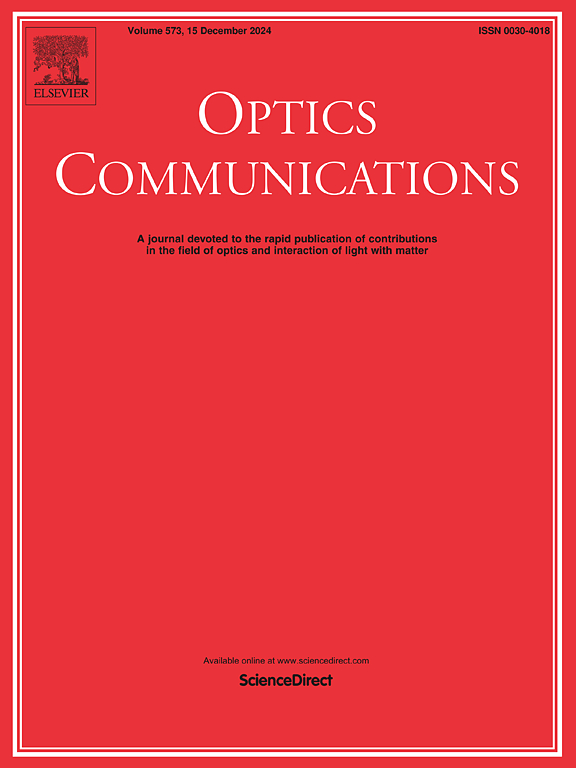Step-index optical fibers with wide parameter tolerance for third-harmonic generation
IF 2.5
3区 物理与天体物理
Q2 OPTICS
引用次数: 0
Abstract
Intermodally phase matched nonlinear frequency conversion processes in optical fibers provide a convenient and compact approach to generate new wavelengths, but efficiency is limited by the strict diameter tolerance of the fiber. Here, we propose a practical and realistic design framework that explicitly incorporates fabrication uncertainties and nonlinear phase detuning for solid step-index fiber. This framework is explained in detail with a specific example of chalcogenide-tellurite hybrid optical fiber which has large core-cladding refractive index difference as well as highly nonlinear core. It is clarified that fabrication tolerance could be relaxed through joint optimization of fiber parameters and input pump power. The results show that conversion efficiency above is possible in a chalcogenide-tellurite fiber with mean core diameter deviation up to along with lenient random fluctuation of a few nm. This work indicates that efficient fiber-based third-harmonic generation could be feasibly achieved under realistic conditions provided that fibers are properly designed and fabricated. The proposed framework could be applied for preparation of such fibers with a variety of core and cladding materials with suitable characteristics, and helps to bring all-fiber optical frequency conversion to practical exploitation.
具有宽参数容限的阶跃折射率光纤,用于三次谐波的产生
光纤中的模间相位匹配非线性频率转换过程为产生新波长提供了一种方便、紧凑的方法,但效率受到光纤直径公差的严格限制。在这里,我们提出了一个实用和现实的设计框架,明确地结合了制造不确定性和非线性相位失谐的固体阶跃折射率光纤。并以芯包层折射率差大、芯高度非线性的硫系碲杂化光纤为例详细说明了该框架。阐明了通过对光纤参数和输入泵功率的联合优化,可以放宽加工公差。结果表明,在平均芯径偏差可达±25nm的硫系碲酸盐光纤中,转换效率可达到~ 5%以上,并且有几nm的随机波动。这一工作表明,只要设计和制造得当,在现实条件下,基于光纤的高效三次谐波产生是可行的。该框架可用于制备具有不同特性的芯层和包层材料的全光纤,有助于实现全光纤频率转换的实际应用。
本文章由计算机程序翻译,如有差异,请以英文原文为准。
求助全文
约1分钟内获得全文
求助全文
来源期刊

Optics Communications
物理-光学
CiteScore
5.10
自引率
8.30%
发文量
681
审稿时长
38 days
期刊介绍:
Optics Communications invites original and timely contributions containing new results in various fields of optics and photonics. The journal considers theoretical and experimental research in areas ranging from the fundamental properties of light to technological applications. Topics covered include classical and quantum optics, optical physics and light-matter interactions, lasers, imaging, guided-wave optics and optical information processing. Manuscripts should offer clear evidence of novelty and significance. Papers concentrating on mathematical and computational issues, with limited connection to optics, are not suitable for publication in the Journal. Similarly, small technical advances, or papers concerned only with engineering applications or issues of materials science fall outside the journal scope.
 求助内容:
求助内容: 应助结果提醒方式:
应助结果提醒方式:


